Fly screens are an essential addition to any home, especially for those who want to enjoy fresh air without the nuisance of insects. In this comprehensive guide, we will explore the different types of fly screens available for windows, their benefits, and provide detailed installation tips. By the end of this article, you will have a clear understanding of why fly screens are a valuable investment for your home and how to choose and install the right ones.
Table of Contents
- Introduction
- Types of Fly Screens for Windows
- Fixed Fly Screens
- Retractable Fly Screens
- Magnetic Fly Screens
- Sliding Fly Screens
- Hinged Fly Screens
- Benefits of Fly Screens
- Insect Protection
- Improved Airflow
- Enhanced Privacy
- Energy Efficiency
- Allergen Reduction
- How to Choose the Right Fly Screen
- Installation Tips
- Preparation
- Tools Needed
- Step-by-Step Installation Guide
- Maintenance and Care
- Common Mistakes to Avoid
- Conclusion
Introduction
Fly screens, also known as insect screens, are mesh coverings that fit over windows and doors to keep insects out while allowing fresh air to flow into your home. They are particularly useful in areas where insects are prevalent and can be a significant nuisance. Fly screens come in various types and offer numerous benefits, from keeping bugs out to improving indoor air quality. In this article, we will delve into the different types of fly screens available, their benefits, and provide practical tips for choosing and installing them.
Types of Fly Screens for Windows
There are several types of fly screens available, each with its own unique features and benefits. Understanding these types will help you make an informed decision when selecting the right fly screens for your home.
Fixed Fly Screens
Fixed fly screens are permanently attached to the window frame and cannot be removed easily. They are typically made of a durable mesh material and are ideal for windows that are frequently left open. Fixed fly screens provide constant protection against insects and are a cost-effective solution for many homeowners.
Benefits:
- Constant protection against insects
- Durable and long-lasting
- Cost-effective
Drawbacks:
- Cannot be removed easily for cleaning
- Not suitable for windows that need to be opened and closed frequently
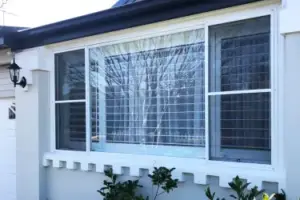
Retractable Fly Screens
Retractable fly screens can be pulled down or rolled up when not in use, offering flexibility and convenience. They are perfect for areas where you might not need a screen all the time, such as windows that are only occasionally opened. Retractable fly screens provide the best of both worlds – protection when you need it and an unobstructed view when you don’t.
Benefits:
- Flexibility to retract when not needed
- Easy to use
- Ideal for windows that are frequently opened and closed
Drawbacks:
- Can be more expensive than fixed screens
- Mechanism may require maintenance over time
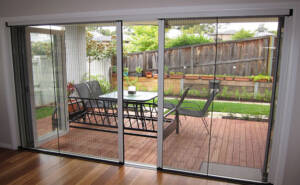
Magnetic Fly Screens
Magnetic fly screens are easy to install and remove, making them a great option for renters or those who want a temporary solution. These screens attach to the window frame using magnetic strips, allowing for easy removal and cleaning. Magnetic fly screens are also ideal for windows that need to be accessed frequently.
Benefits:
- Easy to install and remove
- Ideal for renters or temporary use
- Convenient for frequent access
Drawbacks:
- May not provide as secure a fit as fixed or retractable screens
- Magnets can lose strength over time
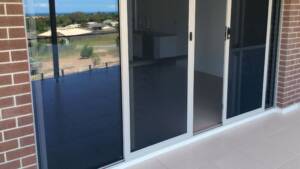
Sliding Fly Screens
Sliding fly screens are designed for windows that slide open horizontally. These screens move along a track and can be easily opened and closed with the window. Sliding fly screens are perfect for large windows and patio doors, providing seamless operation and protection.
Benefits:
- Seamless operation with sliding windows
- Ideal for large windows and patio doors
- Provides easy access
Drawbacks:
- Requires installation of tracks
- Can be more expensive than other types
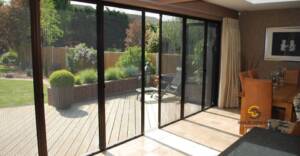
Hinged Fly Screens
Hinged fly screens are attached to the window frame with hinges, allowing them to swing open like a door. These screens are ideal for windows that are frequently accessed for cleaning or other purposes. Hinged fly screens provide easy access and can be secured with a latch when closed.
Benefits:
- Easy access for cleaning and maintenance
- Can be securely latched
- Suitable for frequently accessed windows
Drawbacks:
- Requires space for the screen to swing open
- Can be more complex to install

Benefits of Fly Screens
Fly screens offer a range of benefits that make them a valuable addition to any home. Here are some of the key benefits:
Insect Protection
The primary benefit of fly screens is their ability to keep insects out of your home. Whether it’s mosquitoes, flies, or other bugs, fly screens provide a barrier that prevents these pests from entering while still allowing fresh air to circulate.
Improved Airflow
Fly screens allow you to keep your windows open without worrying about insects, enabling better airflow throughout your home. This improved ventilation can help to keep your home cool and reduce the need for air conditioning, especially during the warmer months.
Enhanced Privacy
Certain types of fly screens, such as those made from one-way mesh, can enhance privacy by obscuring the view into your home from the outside while still allowing you to see out. This added privacy can make your home feel more secure and comfortable.
Energy Efficiency
By allowing you to keep your windows open for natural ventilation, fly screens can help to reduce your reliance on air conditioning. This can lead to lower energy bills and a reduced environmental footprint.
Allergen Reduction
Fly screens can also help to reduce the amount of pollen, dust, and other allergens that enter your home. This can be particularly beneficial for individuals with allergies or asthma, creating a healthier indoor environment.
How to Choose the Right Fly Screen
Choosing the right fly screen involves considering several factors, including the type of window, the level of protection needed, and your budget. Here are some key considerations to help you make the right choice:
- Window Type: Consider the type of window you have (e.g., sliding, hinged, fixed) and choose a fly screen that is compatible with it.
- Mesh Material: Different mesh materials offer varying levels of durability and protection. Common materials include fiberglass, aluminum, and polyester. Choose a material that suits your needs and budget.
- Mesh Size: The size of the mesh openings will affect the level of protection against insects and allergens. Smaller mesh openings provide better protection but may reduce airflow.
- Installation Requirements: Consider whether you need a permanent solution or a temporary one. Fixed screens offer constant protection, while magnetic screens are easy to install and remove.
- Budget: Fly screens come in a range of prices, so consider your budget when making a decision. Keep in mind that more expensive options may offer better durability and features.
Installation Tips
Proper installation is crucial to ensuring that your fly screens are effective and long-lasting. Here are some tips to help you install your fly screens correctly:
Preparation
- Measure the Window: Accurate measurements are essential to ensure a proper fit. Measure the width and height of the window frame and double-check your measurements before purchasing a fly screen.
- Clean the Window Frame: Before installation, clean the window frame to remove any dirt or debris. This will help the fly screen adhere properly and ensure a secure fit.
- Gather Tools and Materials: Make sure you have all the necessary tools and materials on hand, including screws, a drill, a screwdriver, and a measuring tape.
Tools Needed
- Measuring tape
- Drill
- Screwdriver
- Screws
- Cleaning supplies (e.g., cloth, mild detergent)
Step-by-Step Installation Guide
- Measure and Mark: Measure the window frame and mark the positions where the fly screen will be attached. Use a pencil to mark the locations for screws or other fasteners.
- Cut the Fly Screen: If necessary, cut the fly screen to fit the dimensions of your window. Use sharp scissors or a utility knife to ensure clean, straight cuts.
- Attach the Frame: If the fly screen comes with a frame, assemble the frame according to the manufacturer’s instructions. Attach the frame to the window using screws or adhesive strips, ensuring it is level and secure.
- Install the Fly Screen: Attach the fly screen to the frame, making sure it is taut and wrinkle-free. Secure the screen in place using the provided fasteners or adhesive strips.
- Check for Gaps: Inspect the installation for any gaps or loose areas where insects or allergens could enter. Adjust the screen as needed to ensure a snug fit.
Maintenance and Care
To keep your fly screens in good condition, regular maintenance and care are essential. Here are some tips to help you maintain your fly screens:
- Clean Regularly: Dust and dirt can accumulate on fly screens over time. Clean the screens regularly using a soft brush or a vacuum cleaner with a brush attachment. For more thorough cleaning, remove the screens and wash them with mild detergent and water.
- Inspect for Damage: Periodically inspect your fly screens for any signs of damage, such as tears or loose mesh. Repair any damage promptly to ensure continued protection.
- Lubricate Moving Parts: For retractable and sliding fly screens, lubricate the moving parts regularly to ensure smooth operation. Use a silicone-based lubricant to avoid attracting dirt and dust.
- Store Properly: If you need to remove your fly screens for any reason, store them in a dry, cool place to prevent damage. Avoid folding or creasing the screens to maintain their shape.
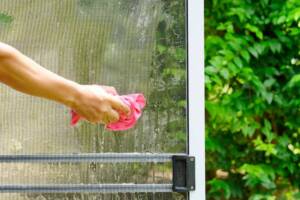
Common Mistakes to Avoid
When installing and maintaining fly screens, there are some common mistakes that can compromise their effectiveness. Here are a few to watch out for:
- Incorrect Measurements: Taking inaccurate measurements can result in a poor fit, leaving gaps where insects can enter. Always double-check your measurements before purchasing and installing fly screens.
- Improper Installation: Failing to secure the fly screens properly can lead to sagging or detachment. Follow the manufacturer’s instructions carefully and ensure all fasteners are tight and secure.
- Neglecting Maintenance: Ignoring regular maintenance can reduce the lifespan of your fly screens and their effectiveness. Clean and inspect your screens regularly to keep them in good condition.
- Using Harsh Cleaners: Harsh chemicals can damage the mesh and frame of fly screens. Use mild detergent and water for cleaning, and avoid abrasive scrubbers.
Conclusion
Fly screens are an essential addition to any home, providing protection against insects, improving airflow, enhancing privacy, and contributing to energy efficiency. By understanding the different types of fly screens available, their benefits, and how to install and maintain them, you can make an informed decision that best suits your needs.
Whether you choose fixed, retractable, magnetic, sliding, or hinged fly screens, each type offers unique advantages that can enhance the comfort and functionality of your home. With proper installation and regular maintenance, your fly screens will provide long-lasting protection and allow you to enjoy fresh air without the nuisance of insects.
Investing in high-quality fly screens is a smart choice for any homeowner looking to create a healthier and more comfortable living environment. Follow the tips and guidelines provided in this article to ensure you select the right fly screens for your windows and install them correctly for optimal performance.
